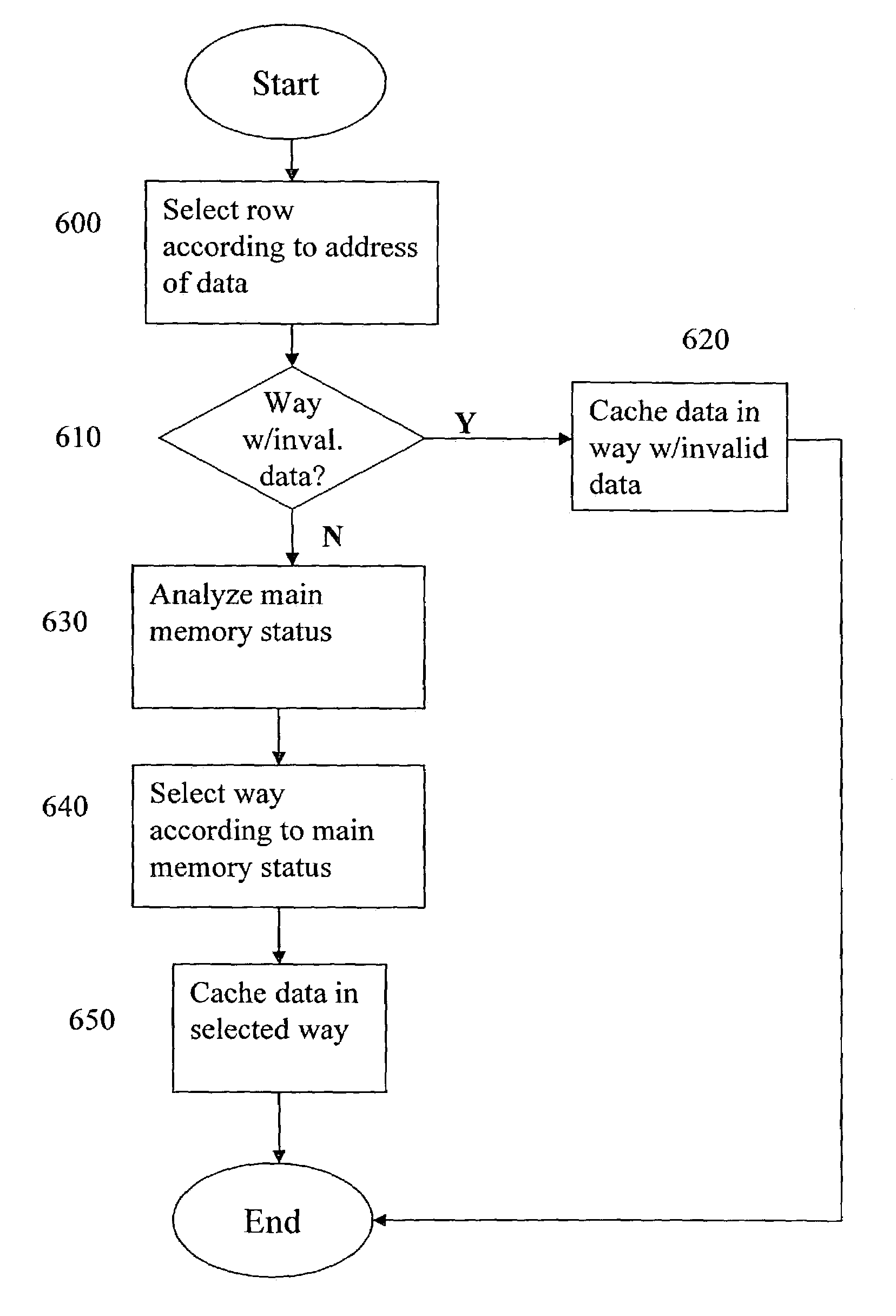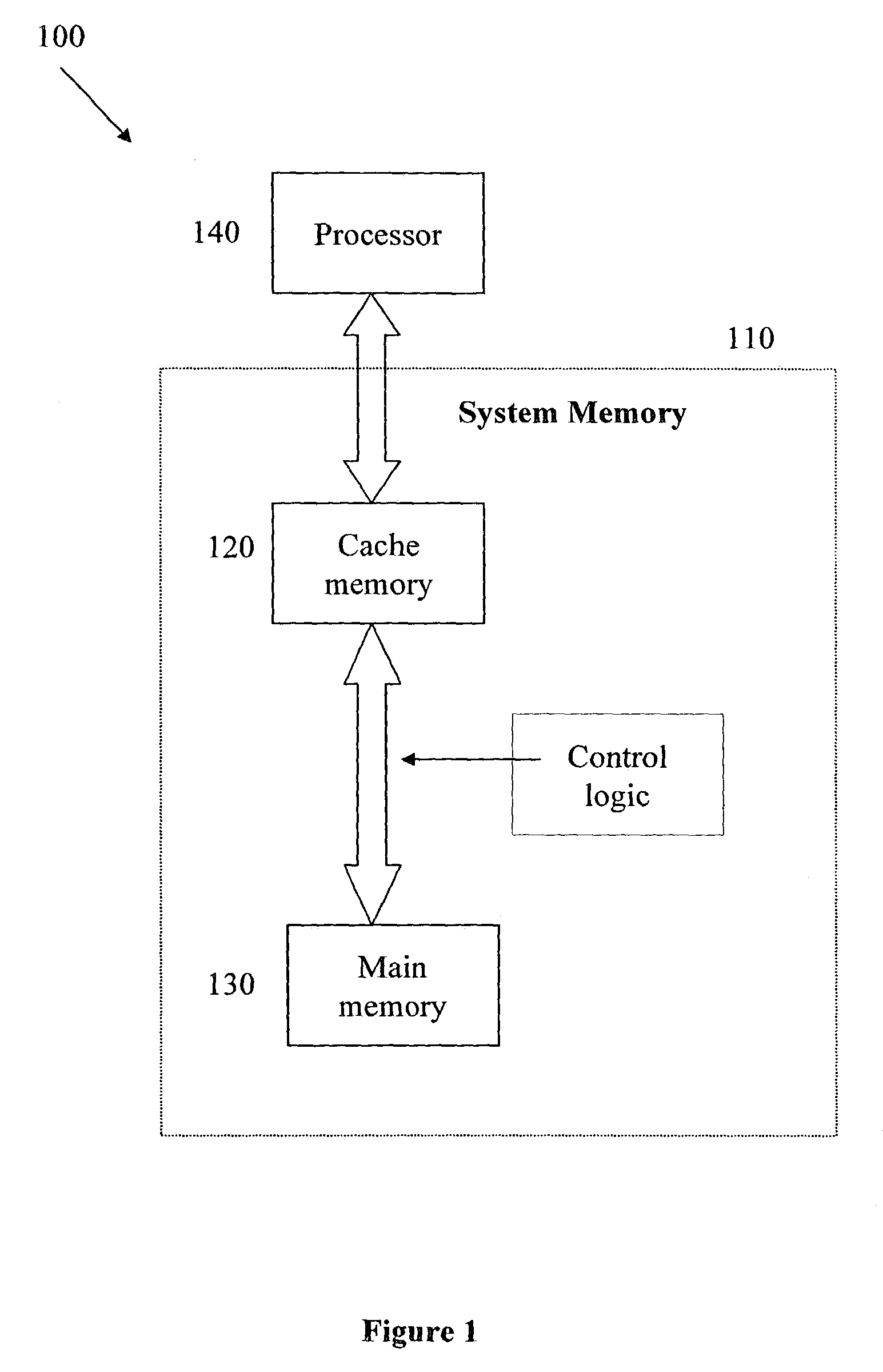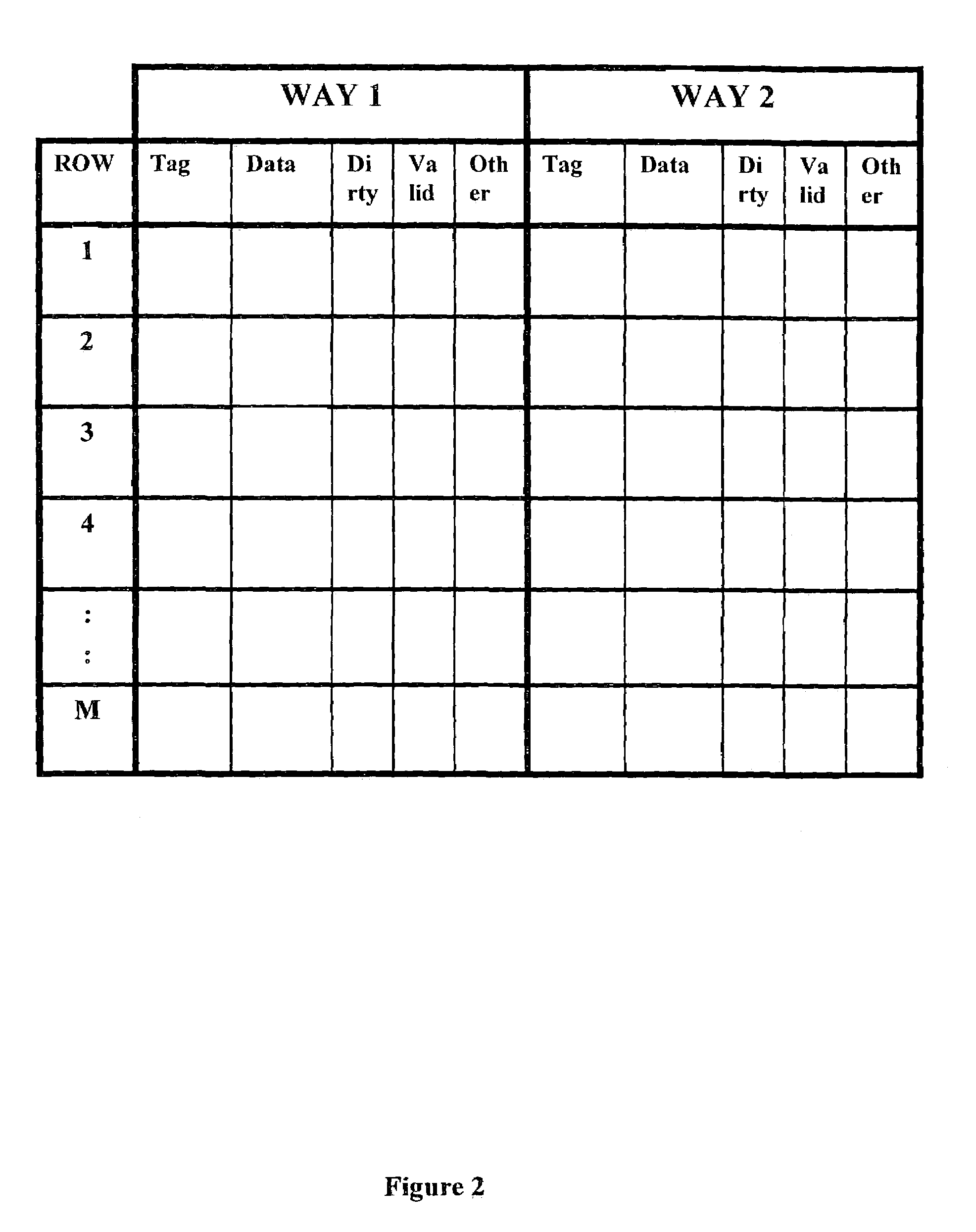Cache memory data replacement strategy
a memory data and replacement strategy technology, applied in the field of cache memory data replacement strategy, can solve the problems of reducing the effectiveness of the cache, affecting the efficiency of the cache, and putting a significant load on the data bus, so as to reduce the time required for updating
- Summary
- Abstract
- Description
- Claims
- Application Information
AI Technical Summary
Benefits of technology
Problems solved by technology
Method used
Image
Examples
Embodiment Construction
[0072]The present invention is of a method and system for caching data in an n-way set associative memory, which can reduce the time required for main memory write operations that occur during data replacement. Specifically, the present invention can be used to improve the performance of the Least Recently Used (LRU) replacement algorithm, when used with a main memory, such as a DRAM, having a page structure.
[0073]The function of a cache memory is to reduce the time required for accessing and / or modifying data or instructions (collectively referred to below as data) from memory. Cache memories store the most recently accessed data from main memory, or other data that is expected to be required frequently. Prior to accessing main memory, the processor checks the cache memory for the required data. If the data is present in the cache (a cache hit) the main memory need not be accessed, resulting in a significant time saving.
[0074]Minimizing the time required for read and write operatio...
PUM
 Login to View More
Login to View More Abstract
Description
Claims
Application Information
 Login to View More
Login to View More - R&D
- Intellectual Property
- Life Sciences
- Materials
- Tech Scout
- Unparalleled Data Quality
- Higher Quality Content
- 60% Fewer Hallucinations
Browse by: Latest US Patents, China's latest patents, Technical Efficacy Thesaurus, Application Domain, Technology Topic, Popular Technical Reports.
© 2025 PatSnap. All rights reserved.Legal|Privacy policy|Modern Slavery Act Transparency Statement|Sitemap|About US| Contact US: help@patsnap.com



